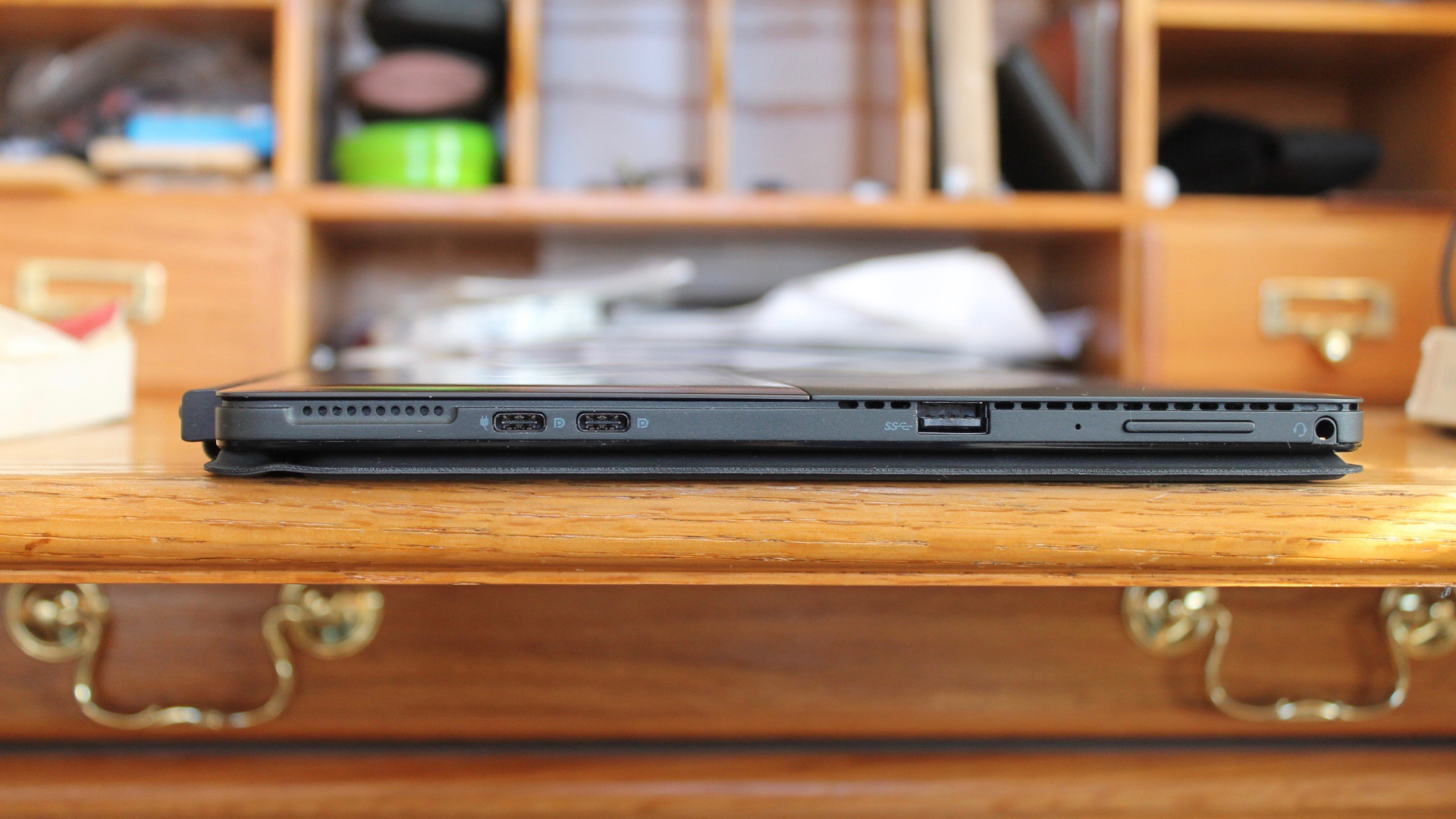TechRadar Verdict
With solid hardware, a rugged but elegant build, tight security features, and a certain cool factor, the Latitude 5290 is everything the on-the-go professional wants – but it isn’t cheap.
Pros
- +
Whisper quiet
- +
Sturdy build
- +
Strong selection of ports
- +
Crisp display
Cons
- -
Cramped, shallow keyboard
- -
Disappointing battery life
- -
Not lap-friendly
Why you can trust TechRadar
Now that the tech sages have declared 2018 to be the year without another Surface Pro, Microsoft’s competitors are putting out new top-of-the-line 2-in-1s with the idea of making 2018 their year instead.
Enter the Dell Latitude 5290 2-in-1 (not to be confused with the Dell Latitude 5290 Business Laptop), an enterprise-oriented detachable device that the venerable Texas manufacturer hopes will capture some of that suddenly up for grabs 2-in-1 territory.
Dell’s website sells the Latitude 5290 2-in-1 we tested for £1,532 ($1,932), excluding VAT. Lower spec configurations start from £1,259 ($899).

Design
The Latitude’s design follows the typical detachable 2-in-1 template: it has a deployable kickstand so the tablet portion can stand on its own, along with a magnetized type cover for easy tablet/laptop conversion, and an extra-large bezel and tactile rear panel so hands can easily grip it.

That said, the Latitude does bring some welcome wrinkles to the 2-in-1 blueprint. It has a nifty, intuitive take on the tablet kickstand – the leg auto deploys by holding the tablet at a 90 degree angle and pressing it into a flat surface.
Furthermore, the kickstand flexes a full 150 degrees, allowing for custom viewing angles and easy access to the micro-SIM and microSD card slots, which are cleverly, and discreetly, located around the back of the tablet.

The Latitude is also awash in enterprise-friendly ports and card slots. Most notably it boasts a Noble Wedge lock, smart card reader, NFC and – much kudos to Dell for this – a pair of DisplayPort over USB-C connectors. Thanks to this port twinning, users won’t have to choose between charging their Latitude and plugging in another device.
Sign up to the TechRadar Pro newsletter to get all the top news, opinion, features and guidance your business needs to succeed!

A magnet on the Latitude’s right-hand side secures the Dell Active Pen (sold separately for £60/$60) to the tablet, though we recommend tethering the stylus the old-fashioned way. The magnet simply isn’t strong enough to prevent the pen from being stripped off by an errant knock, especially if you transport the Latitude loose in a work bag.

Here is the Dell Latitude 5290 2-in-1 configuration sent to TechRadar Pro for review:
CPU: Intel Core i5-8350U quad-core 3.6GHz
Graphics: Intel UHD Graphics 620
RAM: 8GB LPDDR3
Screen: 12.3-inch 1920 x 1280 resolution WVA touchscreen
Storage: 256GB Toshiba PCIe NVMe M.2 SSD
Ports: 2 x DisplayPort over USB Type-C, 1 x USB 3.1, micro-SIM slot, microSD slot, smart card reader, Noble Wedge lock slot, headset/mic combo jack
Connectivity: Dual-band 802.11ac Wi-Fi, Bluetooth 4.2, NFC
Camera: 5MP front camera, 8MP rear camera, IR camera
Weight: 860g (tablet only); 1.2kg (tablet with travel keyboard)
Size: 292 x 216 x 14.91mm (W x D x H tablet with keyboard )
Battery: 42 WHr
Unfortunately the Latitude also suffers from some of the same flaws inherent to all detachable devices.
Firstly, any non-flat surface gives it the fits. Laps, beds, and so forth – they’ll send your Latitude toppling unless it stays perfectly still. Detachable 2-in-1’s are just not balanced – or built with a firm enough base – for true ‘anywhere’ usage.
Secondly, the screen will be afflicted by smudge marks. Despite claims of anti-smudge technology, the Latitude’s glass attracts fingerprints – so be prepared to wipe down your device regularly.
Specifications
The Latitude’s claim to hardware fame is its 8th-generation Intel Core i5 processor, which helped it achieve excellent scores in our benchmark tests as you’ll see shortly. Less exciting is its 8GB of DDR3 memory – that’s only just enough RAM to keep the Latitude from hiccupping during heavy, multi-tab, multi-program usage.
Aside from its processor, the Latitude’s other hardware highlight is 256GB of PCIe NVMe storage. That’s a solid amount of capacity and it’s a quiet and fast drive.
There are three cameras – 5MP, 8MP, and infrared – giving users the ability to video call with the boss, snap pics of Mr. Yum Yums the tabby, and login via Windows Hello (though hopefully not all at the same time). Last but not least – and especially important for enterprise users – the Latitude boasts dual-band wireless-AC 8265 Wi-Fi and Bluetooth 4.2.
